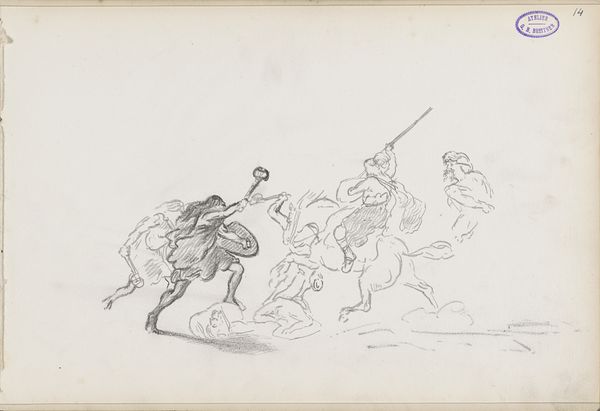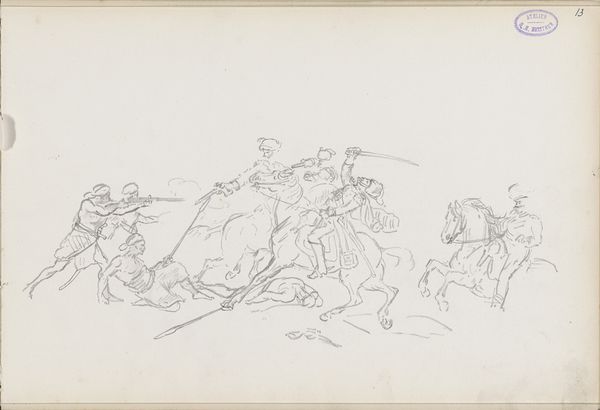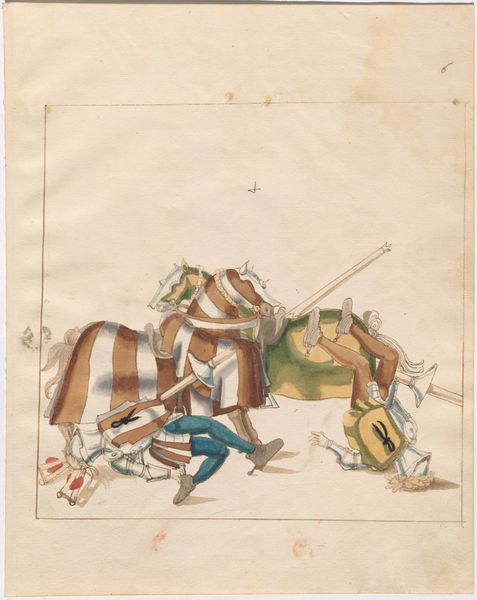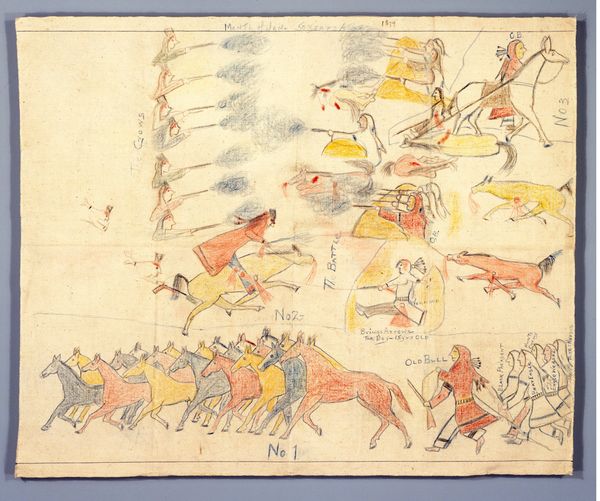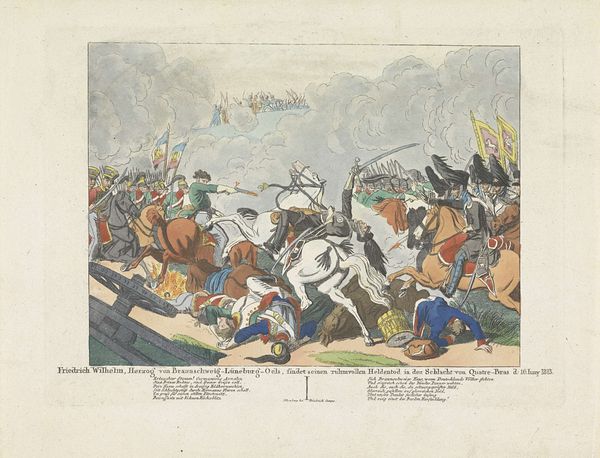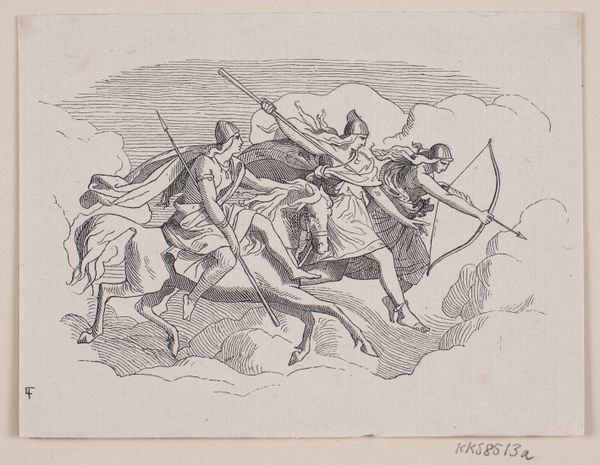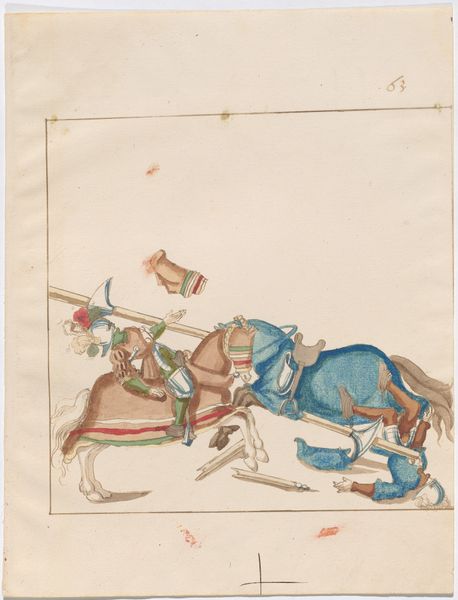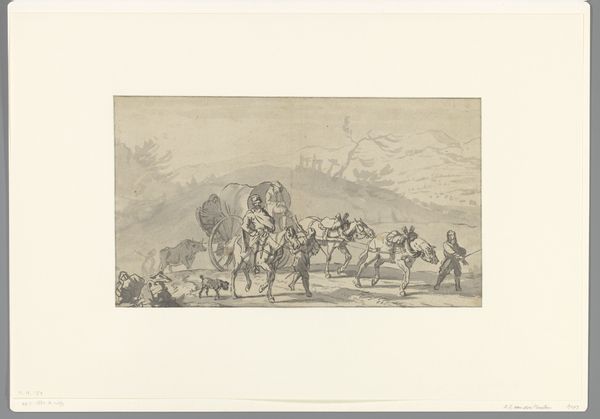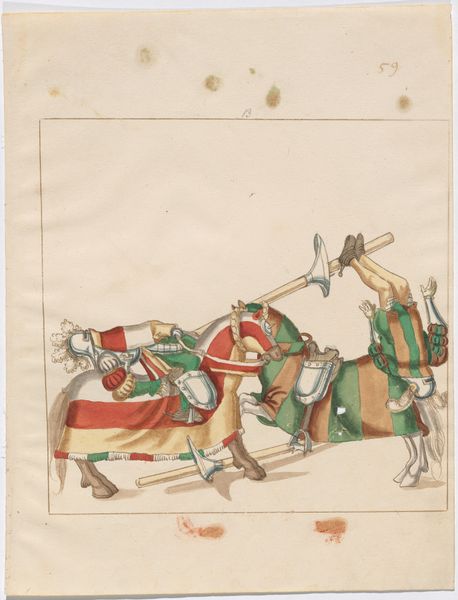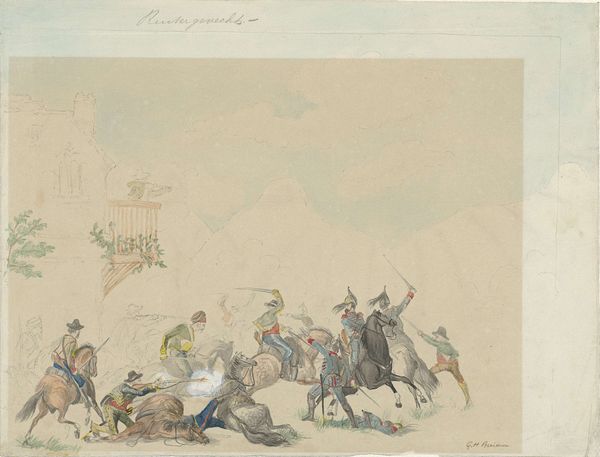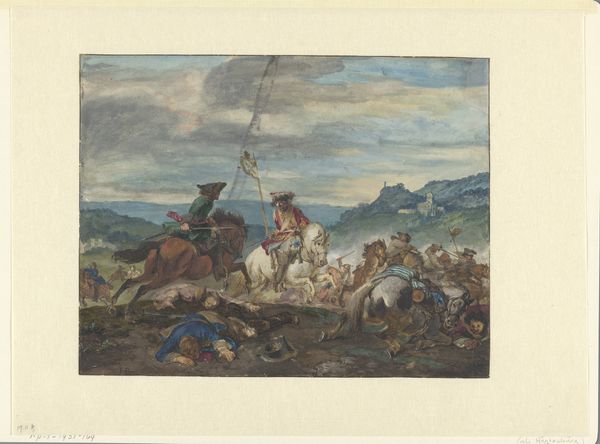
watercolor
#
water colours
#
landscape
#
watercolor
#
coloured pencil
#
history-painting
#
academic-art
Dimensions: height 180 mm, width 305 mm
Copyright: Rijks Museum: Open Domain
Editor: This watercolour and coloured pencil work, "Alexandermozaïek in het Huis van de Faun in Pompeï," likely created between 1865 and 1875, depicts a chaotic battle scene. It definitely captures the intensity of the moment. How would you interpret the piece? Curator: The focus here isn't necessarily the romantic vision of battle, but instead the material process behind its representation. Think about the sourcing of the watercolors, the labour involved in creating such a detailed scene, and even the social context of archaeological discoveries in Pompeii during this period influencing artistic production. These materials and techniques, made by anonymous hands, were destined for consumption in a very specific art market. What does the medium of watercolor, often associated with studies or copies, suggest about its intended audience? Editor: I see what you mean! So, rather than just focusing on the heroic depiction, we should consider the socio-economic factors that enabled its production, and the value attached to such imagery during that era. The accessibility of watercolour as a medium possibly suggests a broader market too. Curator: Exactly. Also, consider how this watercolour translates the monumental mosaic. It’s a shift in scale and medium, potentially making a grand historical narrative digestible for private consumption. The act of copying itself is a form of material engagement, reducing labour while preserving value. Do you think this reproduction democratizes the art or simply commodifies history? Editor: That's a good question! Maybe both. By making it more widely available, it’s democratic, but also the sale and possession commercialises it. Thanks! I have never really considered that. Curator: Looking at art through the lens of its production and consumption provides new dimensions and complexities. The unseen processes that are normally unacknowledged become important. It certainly changes how we see a piece.
Comments
No comments
Be the first to comment and join the conversation on the ultimate creative platform.
